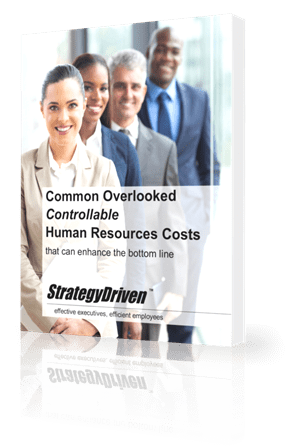The Big Picture of Business – Visioning Scope: Applying Vision Toward Your Organization’s Progress
Visioning is the process where good ideas become something more. It is a catalyst toward long-term evaluation, planning and implementation. It is a vantage point by which forward-thinking organizations ask: What will we look like in the future? What do we want to become? How will we evolve? Vision is a realistic picture of what is possible.
7 Steps Toward Strategic Vision
- Analyze the company’s environment, resources and capabilities. Determine where the Big Picture existed before, if it did at all. Crystallize the core business in terms of viabilities to move successfully forward to some discernible point.
- Clarify management values. Usually, management has not yet articulated their own individual values, let alone those of the organization. This process helps to define and develop value systems to create success.
- Develop a mission statement. It is the last thing that you write, not an end in itself. In reality, the Mission Statement is rewritten several times, as the planning process ensues. The last draft of the statement will be an executive summary of collective ideas and works of the Visioning team.
- Identify strategic objectives and goals. I ask clients to do so without using the words: ‘technology,’ ‘sales,’ and ‘solutions.’ Businesses fail to grow because they get stuck in buzz words and trite phrases that they hear from others. Technology is a tool, which feeds into tactics. Sales is a tactic, one of dozens of tactics which an organization must pursue. Tactics feed into objectives, which feed into goals, which feed into strategy, which feeds into Vision.
- Generate select strategic options. There are many ways to succeed, and your game plan should have at least five viable options. When the Visioning program matures and gets to its second generation, you’ll find that winning formulas stem from a hybrid of the original strategic options. Creative thinking moves the company into the future, not rehashes of the earliest ideas.
- Develop the vision statement. It will be action-oriented and speaks from the facts, as well as from the passion of company leaders. It will include a series of convictions why your organization will work smarter, be its best, stand for important things and be accountable.
- Measure and review the progress. By benchmarking activities and accomplishments against planned objectives, then the company has a barometer of its previous phase and an indicator of its next phase.
7 Biggest Visioning Challenges
- Settle the organization’s short-term problems. Otherwise, they will fester and grow. Many organizations fail because they deny the existence of problems, proceed to place blame elsewhere or hope against hope that things will miraculously get better. Unsolved problems turn into larger roadblocks to growth.
- Never let the vision lapse. Keep the vision grounded in reality through benchmarked measurements. Keep the communication open, and the people will keep the enthusiasm alive. Renew the vision every five years with a formal process, thus including newer employees, the latest in business strategies and, thus, the advantage over emerging competitors.
- Effective visions are lived in details, not in broad strokes. If the mission evolves from the process, then so do the goals and objectives reformulate by changing tactics. The smallest tactics and creative new ways of performing them tend to blossom into grand new visions.
- Be sure that all sectors of the organization participate. The Big Picture cannot be top-down, nor can the embracing of corporate culture be only from the bottom-up. The Visioning committee should represent all strata of the firm.
- Periodically, test and review the process. Understanding why the organization ticks, rather than just what it produces, makes the really big gains possible. Success is a track record of periodic reflections.
- Never stop planning for the next phase. The review and benchmarking phases of one process constitute the pre-work and research for the next. From careful study (not whims or gut instincts) stem true strategic planning.
- Change is inevitable and 90 percent positive. Individuals and organizations change at the rate of 71 percent per year. The secret is in benefiting from change, rather than becoming a victim of it.
Your company’s future relies on your people sharing this vision. Determine if your team understands your vision, if they can see the possibilities, if they know how they fit into the picture and if they are motivated toward action.
About the Author

Hank’s latest book functions as a ‘PDR of business,’ a view of Big Picture strategies, methodologies and recommendations. This is a creative way of re-treading old knowledge to enable executives to master change rather than feel as they’re victims of it.
Power Stars to Light the Business Flame is now out in all three e-book formats: iTunes, Kindle, and Nook.










Leave a Reply
Want to join the discussion?Feel free to contribute!